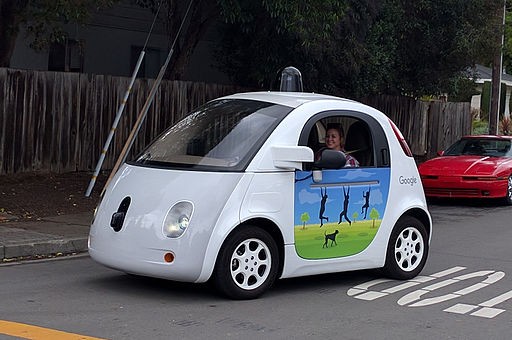By Aaron Smith, | January 11, 2017

Waymo said that it conducted a series of tests to develop the groundbreaking technology. (Grendelkhan/CC BY-SA 4.0)
Soon after Waymo became an independent company (originally part of Google's X), it released an updated version of its automated driving system. The big announcement was made on Jan 8 at the ongoing North American International Auto show. The company revealed that the technology would make its debut aboard a fleet of Chrysler Pacifica Minivans.
Like Us on Facebook
John Krafcik, the CEO of Waymo, explained that there are two main points that should be known by the public considering this technology. The first is that every sensor, technology and all the other tiny bits are engineered and constructed by Waymo.
The second point is that there is a drastic fall in the price of the software. Waymo successfully pulled the figure down to an unbelievable price.
Furthermore, the skill of the technology installed in Pacifica is powered by the three types of LiDAR sensors used to manufacture it. These sensors provide increased sophistication to the self-driving software. What helps these three sensors to achieve this is their ability to scan the environment and gather the required information.
Waymo said that it conducted a series of tests to develop the groundbreaking technology. Approximately two million miles were covered during the tests, and this helped Waymo to design a robust system.
-
Use of Coronavirus Pandemic Drones Raises Privacy Concerns: Drones Spread Fear, Local Officials Say

-
Coronavirus Hampers The Delivery Of Lockheed Martin F-35 Stealth Fighters For 2020

-
Instagram Speeds Up Plans to Add Account Memorialization Feature Due to COVID-19 Deaths

-
NASA: Perseverance Plans to Bring 'Mars Rock' to Earth in 2031

-
600 Dead And 3,000 In The Hospital as Iranians Believed Drinking High-Concentrations of Alcohol Can Cure The Coronavirus

-
600 Dead And 3,000 In The Hospital as Iranians Believed Drinking High-Concentrations of Alcohol Can Cure The Coronavirus

-
COVID-19: Doctors, Nurses Use Virtual Reality to Learn New Skills in Treating Coronavirus Patients











